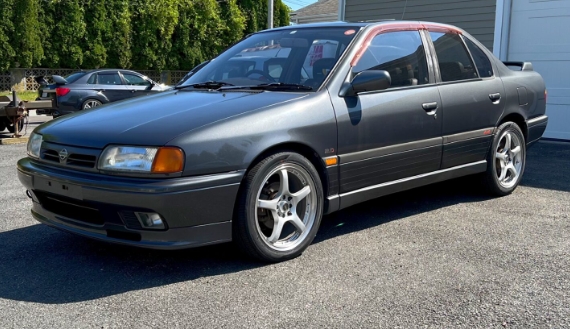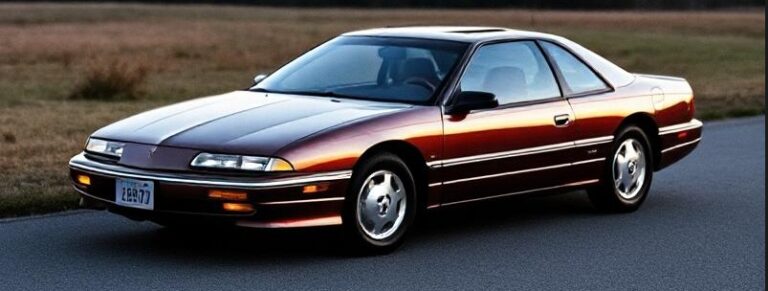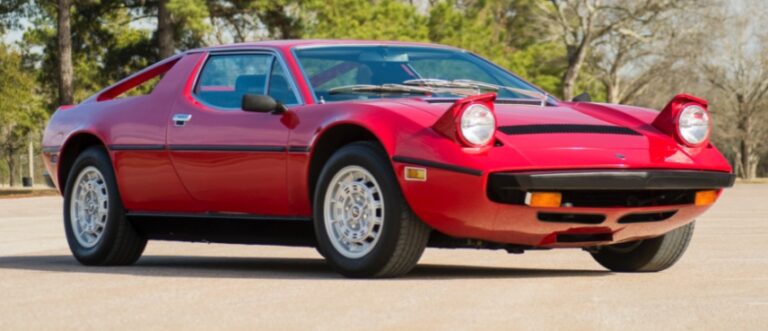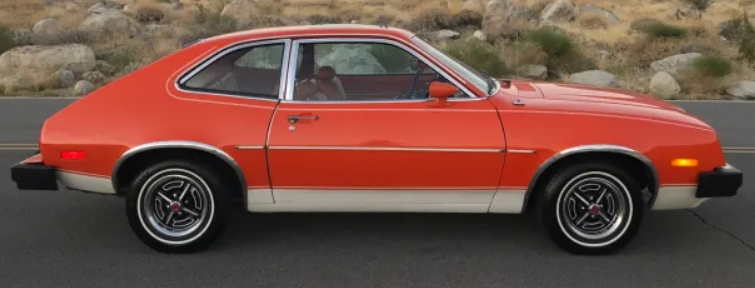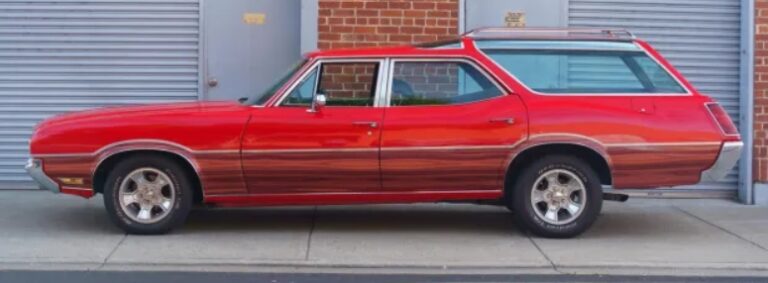The Understated Overachiever: A Comprehensive Evolution of the Nissan Primera
In the annals of automotive history, some cars shout their brilliance from the rooftops, while others quietly get on with the job, earning a devoted following through sheer competence. The Nissan Primera belongs firmly in the latter category. For over a decade, it was the thinking driver’s choice in the fiercely competitive family car segment, a vehicle that consistently punched above its weight, particularly in its handling and engineering. Its story is one of targeted European ambition, motorsport dominance, and a final, audacious design gamble. This is the evolution of the Nissan Primera.
Pre-Prima: Setting the Stage
To understand the Primera, one must first look at its predecessor in Europe: the Nissan Bluebird. While dependable and robust, the T12/T72 generation Bluebird of the late 1980s was a relic of its time—a competent but uninspiring box on wheels with rear-wheel drive heritage. As rivals like the Ford Sierra, Vauxhall Cavalier, and Peugeot 405 were offering more sophisticated front-wheel-drive dynamics and modern designs, Nissan knew it needed a game-changer for the European market. The project P10 was born, not as a Japanese car adapted for Europe, but as a car designed from the ground up with European tastes and roads in mind.
First Generation: The P10 (1990-1996) – The Driver’s Champion
Launched in the autumn of 1990, the first-generation Nissan Primera (P10) was a revelation. Its styling was clean, crisp, and understatedly handsome—a stark contrast to the fussy designs of some contemporaries. Built at Nissan’s new, state-of-the-art facility in Sunderland, UK, the P10 immediately impressed with its exceptional build quality and panel gaps that German rivals would have been proud of.
However, its true genius lay beneath the skin. While competitors were using simple MacPherson struts for their front suspension, Nissan’s engineers equipped the Primera with a sophisticated multi-link front suspension setup. This complex but brilliant design provided superior camber control during cornering, resulting in handling that was leagues ahead of anything else in its class. The P10 was sharp, agile, and communicative, offering a level of driver involvement that was simply unheard of in a mainstream family saloon.
The P10 was offered in three body styles: a four-door saloon, a five-door hatchback, and, from 1991, a five-door estate known as the Traveller.
Trim Levels and Models:
The trim hierarchy was logical and catered to a wide range of buyers:
L: The entry-level model, quite spartan with the basics like a cassette player and central locking.
LS: Added creature comforts like electric front windows and a sunroof.
GS: A step up from LS, often including body-colored bumpers and improved upholstery.
GSX: A more luxury-oriented trim, featuring velour upholstery, electric windows all-round, and sometimes alloy wheels.
SLX: Sat near the top of the range, combining luxury features of the GSX with engines from higher up the range.
SRi: A sporty trim level with firmer suspension, subtle body kit, and alloy wheels, typically paired with the 2.0-litre engine.
GT / eGT: The performance flagship. The eGT (later simplified to GT after a 1994 facelift) was the definitive P10. It featured the legendary SR20DE engine—a 2.0-litre, 16-valve, naturally-aspirated unit producing a punchy 150 PS. Combined with a sports-tuned chassis, a rear spoiler, and bolstered seats, the eGT was a genuine performance saloon that could worry much more expensive machinery on a winding road.
Engine options included a workhorse 1.6-litre petrol (GA16DS carbureted, later GA16DE fuel-injected), the revered 2.0-litre petrol in various states of tune (SR20Di, SR20De, and the high-output SR20DE), and a reliable but slow 2.0-litre diesel (CD20).
The P10’s reputation was cemented on the racetrack. Its stellar chassis made it a natural for touring car racing. In the British Touring Car Championship (BTCC), the Primera became a formidable competitor, and its success created a “win on Sunday, sell on Monday” halo effect that resonated deeply with enthusiasts.
Second Generation: The P11 (1996-2002) – Evolution and Dominance
Replacing a car as critically acclaimed as the P10 was a tall order. With the P11, launched in late 1996, Nissan chose evolution over revolution. The sharp, angular lines of the P10 were softened into a more rounded, contemporary shape that was handsome, if slightly less distinctive. Inside, the cabin was a significant step up in terms of ergonomics, material quality, and refinement, with a flowing dashboard design and improved standard equipment.
Crucially, Nissan kept the P10’s trump card: the multi-link front suspension. It was refined and retuned for a better balance between ride comfort and handling sharpness, but the core DNA of a great-handling family car remained intact. The P11 felt more substantial and mature than its predecessor, a direct response to rivals like the benchmark Ford Mondeo and Volkswagen Passat.
P11-144 Facelift (1999-2002):
In 1999, the P11 received a major facelift, so extensive that it was given the internal designation P11-144. This update brought a radical new front end with large, distinctive “frog-eye” projector headlamps and a prominent chrome grille. The rear of both the saloon and hatchback was also restyled. The aim was to inject more personality into the design, and it remains a recognizable and unique look.
Trim Levels and Models:
The P11 continued with the saloon, hatchback, and estate body styles. The trim structure was slightly revised over its lifetime:
Equation / E: An entry-level, often special-edition model.
S: The new base model, equipped with essentials like power steering and airbags.
SE / SE+: The heartland of the range. The SE (Special Equipment) added air conditioning, alloy wheels, and electrics, making it the most popular choice.
SLX: Continued as the luxury-focused model with features like climate control and wood-effect trim.
SRi: The warm-hatch/saloon model returned, offering a sportier setup and aesthetics.
GT: The performance king. The P11 GT continued to use the fantastic SR20DE engine, paired with a limited-slip differential in some versions. It was a superb all-rounder, offering performance, practicality, and that sublime chassis. It was eventually succeeded by a limited-edition GTSE (GT Special Edition).
Engines were largely carried over initially, with the 1.6 GA16DE and 2.0 SR20De petrols and the 2.0 CD20T turbodiesel. The P11-144 facelift introduced new engines, including a modern 1.8-litre petrol (QG18DE) and a 2.0-litre petrol option mated exclusively to a Hypertronic CVT automatic transmission.
The P11’s motorsport career eclipsed even that of the P10. In the hands of the RML team, the Primera became the dominant force in the BTCC’s Super Touring era. The iconic red and white Vodafone/Castrol livery is etched in motorsport history. In 1999, with Laurent Aïello at the wheel, the Primera clinched the Drivers’, Manufacturers’, and Teams’ championships, a clean sweep that cemented its legendary status.
Third Generation: The P12 (2002-2007) – The Avant-Garde Gamble
By the turn of the millennium, the automotive world was changing. The Renault-Nissan Alliance had formed, and under the leadership of Carlos Ghosn, Nissan was encouraged to be bolder and more daring. The third and final generation of the Primera, the P12, launched in 2002, was the embodiment of this new philosophy.
The P12 was a breathtaking departure from its predecessors. Designed at Nissan’s European Design Centre in Germany, its “monosilhouette” shape blended the bonnet, cabin, and boot into a single, flowing arc. It was futuristic, radical, and utterly unlike anything else in its class.
The revolution continued inside. The traditional instrument binnacle behind the steering wheel was gone, replaced by a centrally mounted console that housed all the dials. Dominating the dashboard was the N-FORM system—an integrated screen controlled by a joystick panel that managed climate, audio, and trip computer functions. Top-spec models included a “bird-view” satellite navigation system and, incredibly for a mainstream car in 2002, a standard colour reversing camera. It was a technological tour de force.
However, a price was paid for this innovation. The P12 was built on a shared platform with the Renault Laguna II. In the process, the cherished multi-link front suspension was replaced with a more conventional MacPherson strut setup. While the P12 was a supremely comfortable and quiet cruiser, it had lost the sharp, communicative handling that had defined the Primera name. The driver’s car had become a comfortable tech showcase.
Trim Levels and Models:
The trim structure was simplified, reflecting the car’s focus on technology:
S: The base model, which still included the N-FORM screen, climate control, and six airbags.
SE: Added 16-inch alloy wheels, cruise control, and fog lights.
SVE: A high-spec model featuring 17-inch alloys, part-leather seats, and rain-sensing wipers.
T-Spec: The range-topper (T for Technology), which included the full-fat N-FORM system with satellite navigation, Xenon headlights, and the reversing camera.
Engines were all-new. The petrol range consisted of a 1.8-litre (QG18DE) and 2.0-litre (QR20DE). The diesel options were sourced from Renault, comprising the excellent 1.9 dCi and the powerful 2.2 dCi.
.
THIS is GOOD stuff if your car is in need:

.
The End of an Era
Despite its technological prowess and brave design, the P12 failed to capture the public’s imagination. Its avant-garde styling was polarizing, and its softened dynamics alienated the enthusiasts who had championed the P10 and P11. Furthermore, the market itself was shifting. Buyers were beginning to move away from traditional family saloons and towards a new breed of vehicle: the crossover SUV.
Nissan was at the forefront of this shift. As Primera sales dwindled, development for its replacement was already underway. This replacement was not another saloon, but the Nissan Qashqai. When the Qashqai launched in 2007, it was an instant, monumental success, and the fate of the Primera was sealed. Production quietly ceased, and Nissan formally withdrew from the D-segment family car market in Europe.
The Nissan Primera’s legacy is a tale of three distinct acts: the P10, an engineering masterpiece that set a new benchmark for handling; the P11, a refined evolution that conquered the racetrack; and the P12, a bold but flawed glimpse into the future. For two generations, it was the enthusiast’s secret—a reliable, well-built family car with the soul of a sports saloon. It may be gone, but for those who knew its strengths, the understated overachiever will never be forgotten.
